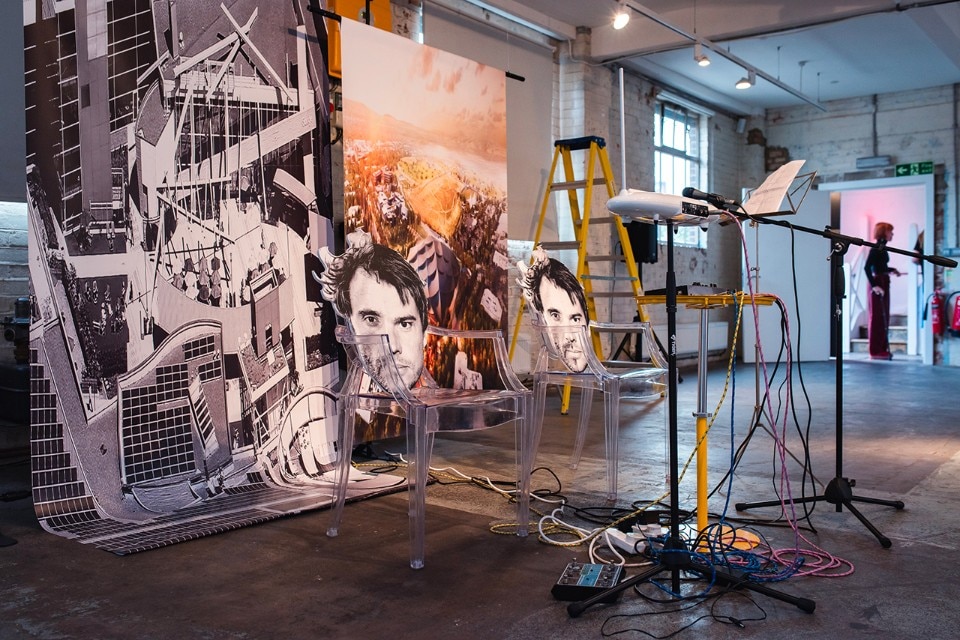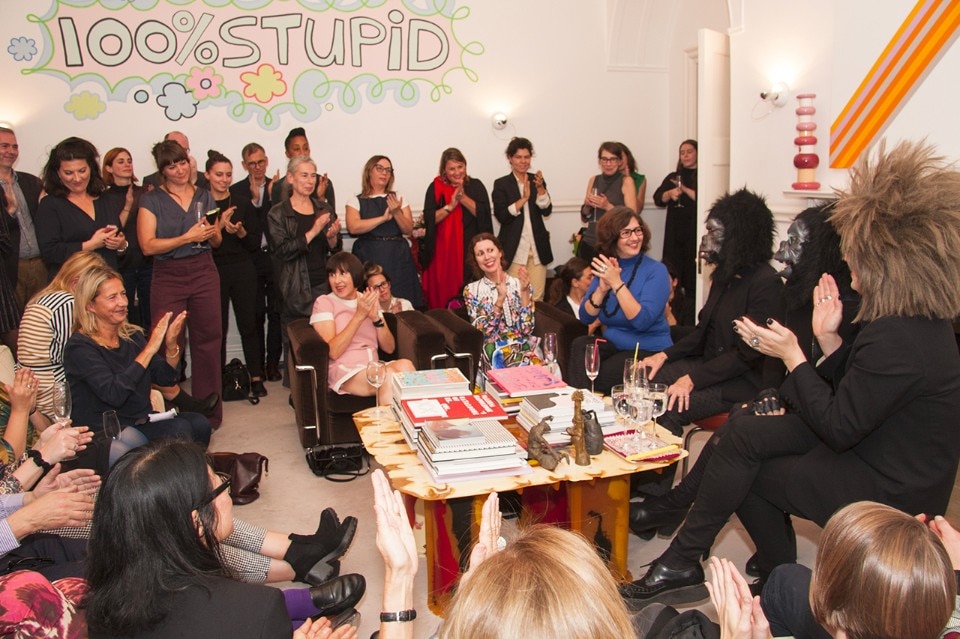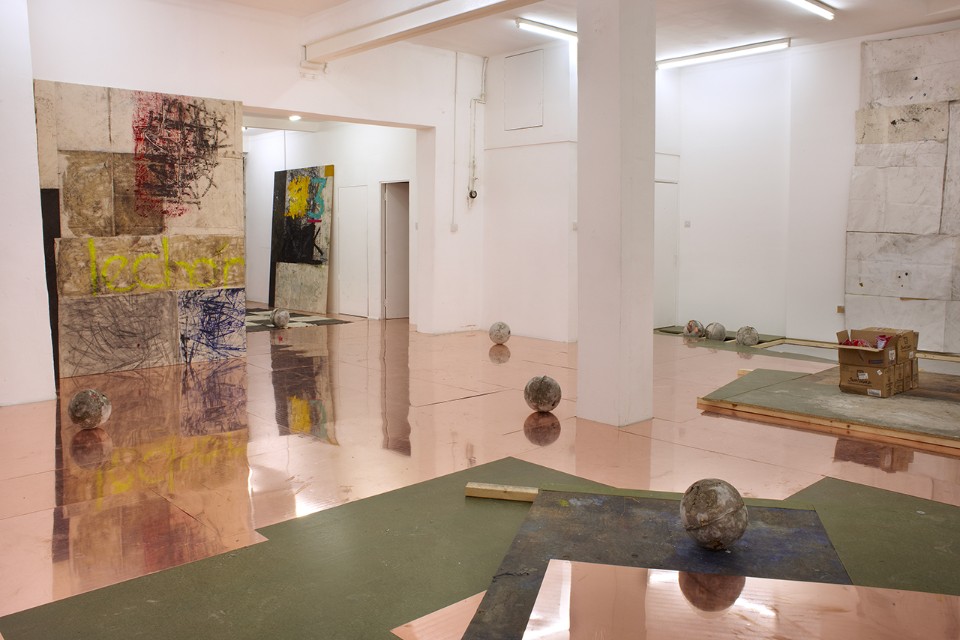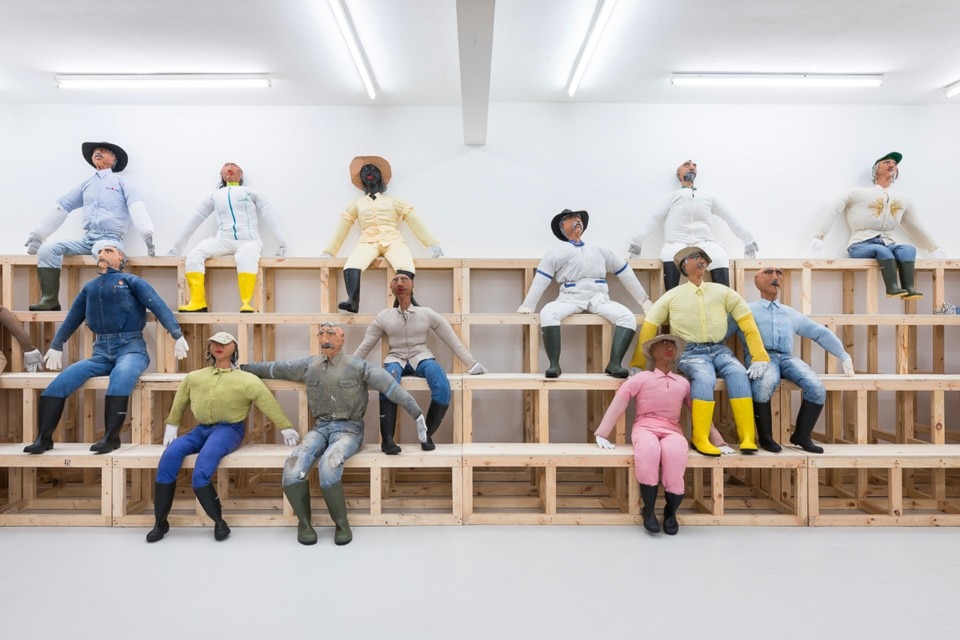"So how much money is Cattelan paying for this?" This was a question I heard when I decided to come out into the open and reveal that the idea for Crepaccio, a display window "on loan" from a trattoria in Milan, originated during a lunch with Maurizio Cattelan, the artist from Padua. I had been directing the content of the display in all anonymity for some time.
The query above stumped me at the time, and has me thinking about it still. Not because Cattelan never invested one euro in the project, but because of how blatantly it shows the difficulty of comprehending the existence (now that the art world is so influenced by the market) of a space based only on the exchange of professionalism, time and networking. Now that its exhibitional activity has been shifted to Instagram, Crepaccio is still one of the many oases that remain detached from the logic of commerce, which is seen rearing its ugly head increasingly often in the speculative badlands that the art system has become. Crepaccio is one of the numerous disparate initiatives preserving experimental and independent identity thanks to gratuitousness.
Other instances are slowly but inexorably coming to the fore regarding the redistribution of art, and acts of philanthropy. Non-profit-making organisations seem to be the antibody that the art system is producing in reaction to the implacability of mercantile drifts that have transformed it with its own approval into one of the most cut-throat territories of turbo-capitalism, able to generate an enormous flow of money but increasingly less value.

Yet a change is underway. We are starting to see the public discussion of things that were known but unexpressed until recently. Last June, for instance, T Magazine of The New York Times published a conversation in which two doyens among art dealers, Sean Kelley and Paula Cooper, denounce the aggressive supremacy of art fairs, auction houses and corporation-style galleries.
Signs of resistance toward the hegemony founded on economic power are also seen inside the gallery circuit. One example is Condo, a non-profit with a commercial model that applies the sharing economy to art, as an alternative to art fairs. It organises the sharing of gallery spaces in the different cities where its platform is present. For instance, a gallery from Brussels can present its artist at a gallery in New York, with obvious reciprocal benefits. Condo started in 2016 in London, and now involves the cities of New York, Mexico City, São Paulo and Shanghai.
Non-profit-making organisations seem to be the antibody that the art system is producing in reaction to the implacability of mercantile drifts that have transformed it with its own approval into one of the most cut-throat territories of turbo-capitalism.
More encouraging signs are to be found in the British capital, despite the fact that during the 20-year run-up to Brexit, it has turned into the ideal city for the global mega-rich, and thus the ideal piazza for giga-galleries and super-fairs. According to the British-Italian artist and curator Simon Moretti, the new energy is self-organising in the cracks of the system, making a virtue out of necessity. "A number of young galleries and 'project spaces' have closed because of the art fair monopoly. The reduction of exposition possibilities certainly did not suppress artists' need to show their work. So some of them are using their studio as exhibition rooms. David Noonan, for example, created Mackintosh Lane as a non-profit to promote mainly young artists. The great Yinka Shonibare organises projects with Guest Projects, an initiative he began ten years ago," says Moretti.
The collector Valeria Napoleone, also from London, says she is optimistic, because things are changing quickly. "I think we're at a cross-roads. On one side there is the boorish art market, and on the other, there is the art world, where people work with integrity and passion. Between the two, lines are being drawn. Personally, I am very careful about who I do business with, where I buy and who I buy. When I support exposition projects or publications with philanthropic contributions, they often concern artists who are not in my collection, in order to avoid a conflict of interest. Many collectors I know are extricating themselves from the system where every day, some art consultant pops out of the woodwork who used to work in finance."

Repeating the words integrity and commitment like a mantra, Napoleone has decided to reinforce her philanthropic activity through the association Valeria Napoleone XX. She personally ideates and sponsors projects for young and mid-career artists – the ones who suffer most, she says, because they don't even have the allure of novelty on their side. She collaborates to this end with respected institutions such as the Institute of Fine Arts at New York University.
Cristiano Raimondi agrees. He is the head of development and international projects at the Nouveau Musée National de Monaco and vice-president of the newborn non-profit association Società delle Api. Based on "the disillusionment with the banditry of the market in a system where the opinion leaders are no longer intellectuals but economic operators," he underlines the need for resistance actions based on the concept of redistribution. "Società delle Api executes a systemised plan for the philanthropic activity of Silvia Fiorucci-Roman, a collector and the president of the Api company. Expositional projects, artists' residencies and publications based around the Mediterranean basin aim to build an interdisciplinary hub that creates work for artists, artisans, designers and other cultural subjects," says Raimondi.
Interdisciplinarity is also a characteristic at Topical Cream, a paradigmatic project of new visibility opportunities for emerging artists using experimental studies offered by Internet and Instagram. Always informed up to the minute about new trends, Felix Burrichter, the creator of the Pin Up magazine "for architectural entertainment", speaks highly of Topical Cream. "It's a sort of virtual Kunsthalle grafted onto a radical magazine. It's an online space managed by women for gender-nonconforming artists with relatively marginal visibility. It exists outside of the often-patriarchal circuit of commercial galleries."
The public art institution needs to be rethought from scratch. First of all, it must find a sense of civic service and reconnect relations with the artistic community of its area.
How do public institutions relate to this big little revolution underway? Currently, museums present themselves all too often as rentable locations farmed out to companies that produce exhibitions whose primary aim is to sell as many tickets and catalogues as possible. This means they offer the public at large exhibitions that agree with its taste. Elsewhere, without visitors being informed, private galleries finance shows of their own artists in museums, for obvious promotional and speculative reasons. Institutions play along with this to varying degrees of awareness.
Some pioneers continue to attempt to render public service, such as Tensta Konsthall, which opened in the late 1990s in one of the poorest and most multi-ethnic suburbs of Stockholm. Its programme speaks the trendy language of international experimentation. At the same time, it offers workshop space to local artists and involves students and children from the neighbourhood. The management of its cafeteria was subcontracted to citizens from Eritrea, turning multiculturalism into a practice that enriches the eating experience of visitors on a daily basis. Entrance is free. About 60 per cent of financing comes from public funds. Difficulties abound.

"Despite the fact that their function is crucial, this type of institution is often underfinanced, and their experience ignored. Why is that?" asks the director Maria Lind without being able to answer. The subject is complex.
Without a doubt, at our latitudes, the public art institution needs to be rethought from scratch. First of all, it must find a sense of civic service and reconnect relations with the artistic community of its area. It needs to speak a truly international language, not merely have a xenophilic tongue. In Milan, the city where everything seems to be in place at the moment, this type of space is lacking. We'll call it a Kunsthalle until we find a name for a new type of public space for art, dedicated to the cultural growth of the community. It must be a space that does not wallow superciliously in the (dis)value of marginality, rather it must be good at raising enthusiasm with a broad public.
In the meantime, we'll return to where we started by quoting the gallery owner Sean Kelley: "Nobody’s saying they don’t want to make money. It’s about how much money you need to make, and how you make it."
The full-length version of this article was published in Italian in the printed edition of the DomusPaper supplement to Domus issue 1028, October 2018.


